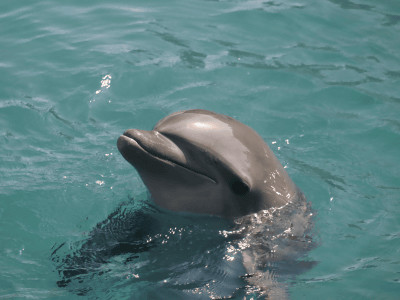A kind of shark has the ``ability to walk 30m on land'', and the possibility of adapting to environmental changes due to climate change

A kind of shark that inhabits the shallow waters of Australia and New Guinea,
Aquatic Walking and Swimming Kinematics of Neonate and Juvenile Epaulette Sharks | Integrative and Comparative Biology | Oxford Academic
https://doi.org/10.1093/icb/icac127
Epaulette sharks able to walk on land evolving to better survive climate crisis | Fish | The Guardian
https://www.theguardian.com/environment/2022/aug/23/epaulette-sharks-walk-on-land
The ancestors of modern terrestrial vertebrates are thought to be a group of fish called lobe- finned fish, and it is said that fish that were washed up on land developed fins to move into the water and eventually adapted to life on land. increase. In fact, some fish can use their fins like legs to walk on the seabed and shallow waters, and in 2020, a new species of shark that walks with its fins has been discovered .
It has long been known that the Mammontuck nurse shark, which belongs to the nurse shark family, can also walk on land. The following movie shows the actual walking of Mammontsuki Tenjiku Shark.
Epaulette Shark Walks on Land-YouTube
The Mammontuck nurse shark is a small shark, less than 1m in length, and preys on small animals and small fish in shallow waters and tidal pools .

However, the water level in shallow water is subject to fluctuations due to the ebb and flow of the tide, and sometimes it becomes so shallow that the Mammontuck's nurse shark cannot swim. Also, tide pools are prone to oxygen depletion, so if the oxygen concentration reaches a dangerous level, you have to move to another tide pool.

In the harsh Australian sun, it's impossible to wait patiently for the tide to rise again.

Adapted to such a situation, Mammon's Tusk Shark has acquired the ability to survive for up to 2 hours even in hypoxic conditions by slowing breathing and heart rate.

They can also use their fins as legs to walk up to 30m on dry land.

This ability allows the Mammonfish nurse shark to move to a nearby deep water or another tidal pool even if it has dried up.


I was able to move safely to a safe place.


A research team at Florida Atlantic University in the United States and James Cook University in Australia conducted further research on the walking ability and ability to survive hypoxic conditions of the mammon's shark. Examination of anatomical features at various stages of development revealed similar abilities in juveniles.
Marianne Porter, an associate professor of bioengineering at Florida Atlantic University, said tidal pools and shallow coral reefs are pretty harsh environments, so the ability to survive hypoxia and walk on land is important. , ``These small sharks can move from tide pool to tide pool, accessing new pools to feed, or to oxygen-rich pools.''
In addition, the research team argues that the walking ability of the Mammontuck shark is not only suitable for shallow water and tidal pool environments, but may also be suitable for surviving severe environmental changes due to climate change. 'Our findings so far suggest that the Mammonfish nurse shark has the adaptive capacity to withstand some of the challenging conditions predicted for the 21st century,' he said.
Related Posts:







